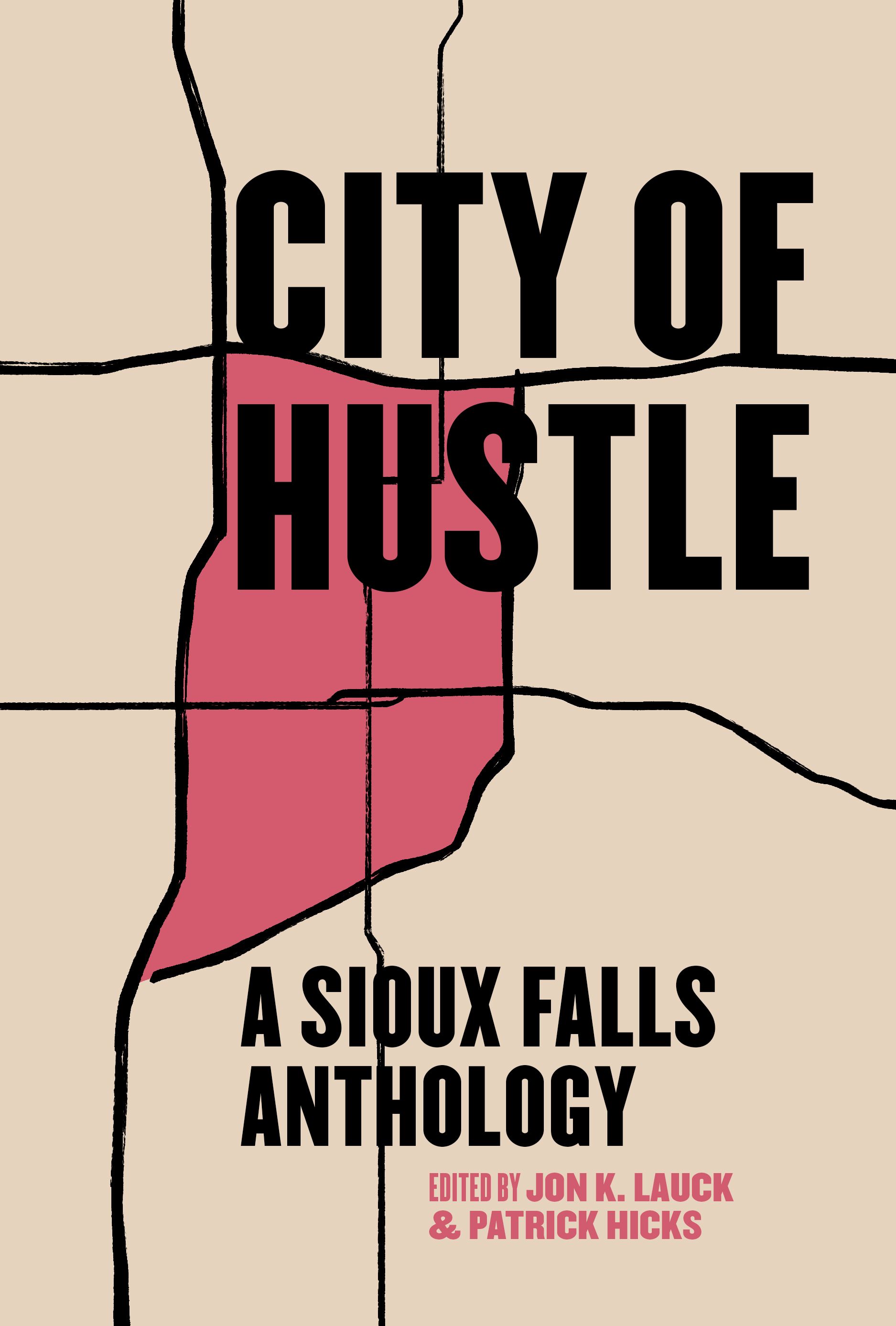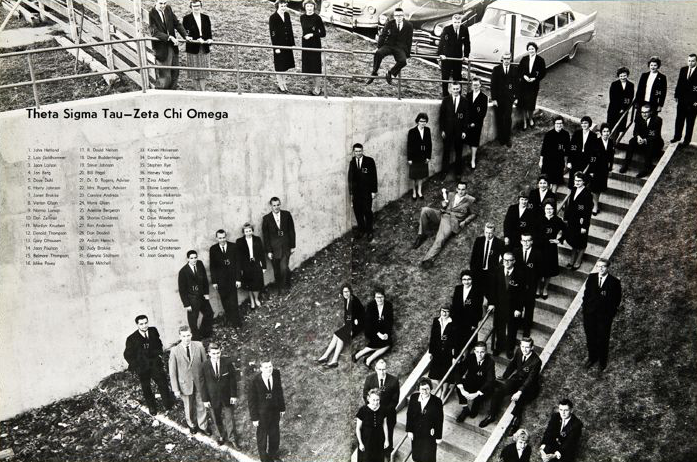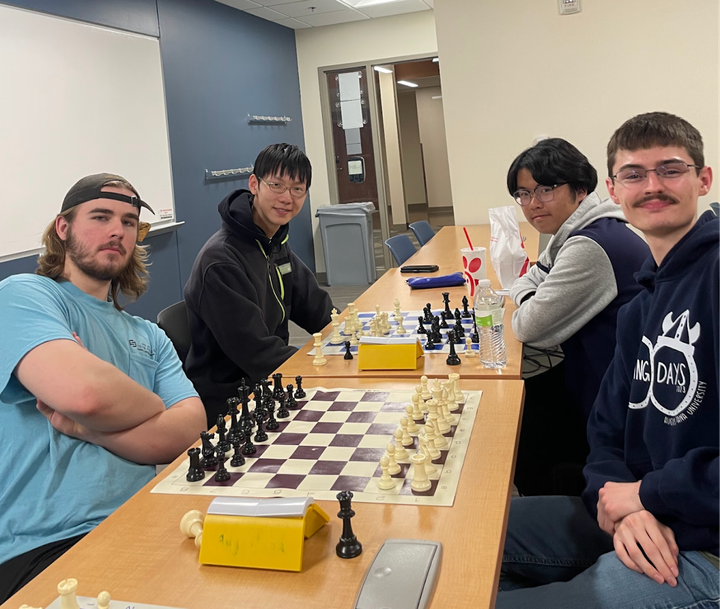Professor preserves city history in new anthology

The city of Sioux Falls really shouldn’t exist. At least, that’s what English professor Patrick Hicks claims.
“It’s not really next to a big river,” he said. “We had to finagle our way to get the two highways to cross where they did. The town didn’t have the economic prosperity that it currently does until we got the VA [Medical Center] after World War II, and we had to finagle for that.”
Hicks said the city of Sioux Falls had to scheme in order to become the hub it is today. Because of this, there is a lot of rich history to the city, yet Hicks said that it isn’t very well known. He isn’t the only person who feels this way.
Jon Lauck, an author, historian and close friend of Hicks, said the reputation of the Midwest is usually that of flyover states.
“The Midwest is sort of a lost region,” Lauck said. “It’s a very special place, and we need to recognize its uniqueness more than we do.”
Back in the spring of 2019, Hicks and Lauck decided to co-edit a collection of essays filled with the hidden history of Sioux Falls. On Oct. 11 of this year, the anthology was officially released. Because of the city’s ambitious beginnings, the collection is called “City of Hustle: A Sioux Falls Anthology.”
The idea for the book fits with the scrappy theme, as it originated from napkin scribbles in a downtown Sioux Falls jazz club.
“My co-editor and I used to meet at the Paramount on Phillips Avenue to unwind and talk about literature and things like that,” Hicks said. “We got to thinking about the stories of Sioux Falls, and we thought, ‘Someone should write a book about all of the interesting things in Sioux Falls history.’”
Soon enough, Hicks and Lauck took that task upon themselves.

“We knew that if we could get people interested in writing the essays that the book would sort of take care of itself,” Hicks said.
Forty-six essays, one preface and one introduction later, “City of Hustle” made its way to shelves.
Lauck partnered with Belt Publishing because he heard they were doing a series on cities. He said that when he pitched the idea to the company, they were “all for it” because of its informed and informal style.
“I wanted the voices in this to be like you’re sitting down in a coffee shop, and someone was going to tell you a really cool story,” Hicks said. “[The authors] know what they’re talking about, but it’s in a very informal, almost friendly way.”
The only cohesive theme between the essays is Sioux Falls. Each story provides a perspective unique to the author. The age of contributing writers stretches from recent college graduates to people in their 80s.
“The essays range from obscure topics that I had heard rumors of to pivotal pioneer history,” Destiny Pinder-Buckley, one of the contributing writers and a graduate of Augustana University, said.
The book’s connection to Augustana is a point of pride for Hicks. He said that there are almost 50 contributing writers and that 20% of them are either Augustana professors or alumni.
Daniel Gerling, an English professor at Augustana, wrote an essay titled “Fear and Loathing: McGovern ’72.” Gerling said that he was thrilled when he found out about the anthology.
“Midwestern culture and history is far too often overlooked,” Gerling said. “This anthology was a golden chance to explore Sioux Falls’ history from so many different perspectives.”
Gerling’s essay features the 1972 presidential election and how candidate George McGovern and “Fear and Loathing in Las Vegas” author Hunter Thompson were both at the same Holiday Inn.
“Patrick actually suggested [the] topic to me,” Gerling said. “I was really excited to write about this extremely important chapter in Sioux Falls history.”
While some of the essays are about the city’s history, several of them are also personal. Pinder-Buckley wrote an essay about her experience with the COVID-19 pandemic and how her love for Sioux Falls developed.
“As a senior, I had overheard Dr. Hicks talking about the project and thought I’d send in a pitch,” Pinder-Buckley said. “I pitched only the one idea. I knew the other topics focused on places or history, and I wanted to write a personal essay about coming to love South Dakota and Sioux Falls in particular.”
She said that she had been attempting to write this story for a while and that having it be a project for the anthology helped motivate her to complete the essay. While her topic didn’t require any fact-checking, Pinder-Buckley said it was still difficult due to the story being so personal.
“Patrick had told me early on that my essay would be the last in the anthology, which felt important,” she said. “After COVID, I decided I wanted to go to grad school outside of South Dakota. This meant I was writing an essay about how much I loved South Dakota, but I was going to be leaving it.”
Pinder-Buckley said that while her essay changed angles a few times, the only comments she received on it were just a few grammatical fixes.
She also said that she believes the anthology is very valuable to both the local community and South Dakota as a whole.
“It’s a hodgepodge of collective Midwestern memory,” Pinder-Buckley said.
Kim Ode, a columnist, author and graduate of Augustana, reviewed the anthology for the Star Tribune.
“‘City of Hustle’ [is] an anthology of essays by a compelling array of (mostly) South Dakotans,” she wrote. “The essays vary, some deeply researched and footnoted, others well-informed musings.”
Ode said that she was surprised to learn the history behind many of these essays, and she noted that it’s easy to think you know “pretty much all there is to know about” the place you grew up.
Hannah Redder, a contributing writer and Augustana alumna, said she believes the anthology is a helpful resource.
“I think one of the most important things you can learn about is the place you live [or] come from,” she said. “Sioux Falls is just a really cool place full of such cool, smart people. In addition to everything else it is, ‘City of Hustle’ is an exhibition of all that talent.”
Despite the anthology having almost 50 essays, there is still a lot of history that hasn’t been told.
“In 1992, Money magazine named Sioux Falls the best town to live in in America,” Hicks said. “I recognize that was 1992, and it was some time ago, but that’s still the case. I think there’s a lot happening.”
There is so much happening that both Hicks and Lauck teased at a potential second edition of Sioux Falls-based essays. Gerling said he agrees with them.
“We could easily write a second volume,” Gerling said. “The stories are there. They just need to be written, and really I think they need to be written before they’re lost.”
Whether a follow-up is written, Hicks said this book connects to the history of Sioux Falls and the Midwest.
“I think a lot of people don’t understand and appreciate the history of Sioux Falls,” Hicks said. “I think that in general across the Midwest, there’s a sort of apathy towards Midwest history. This book corrects that.”



